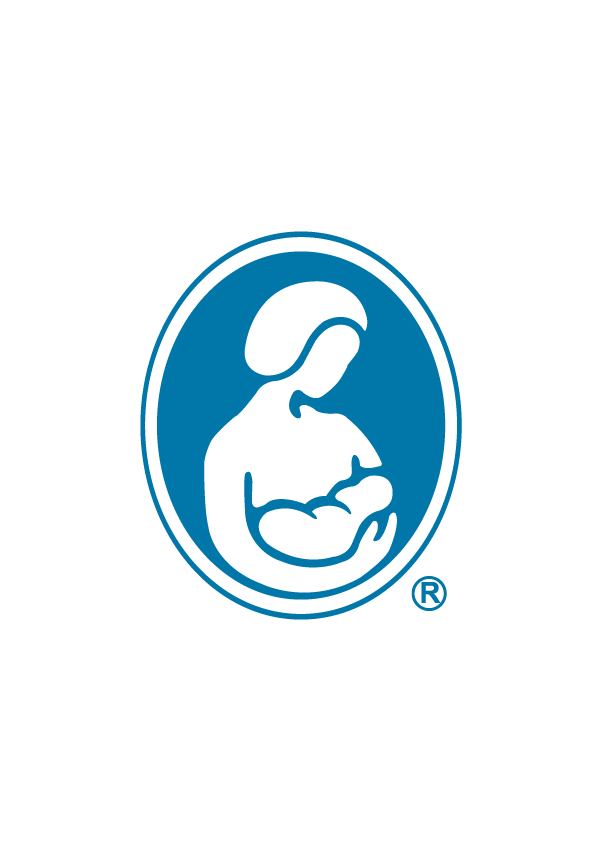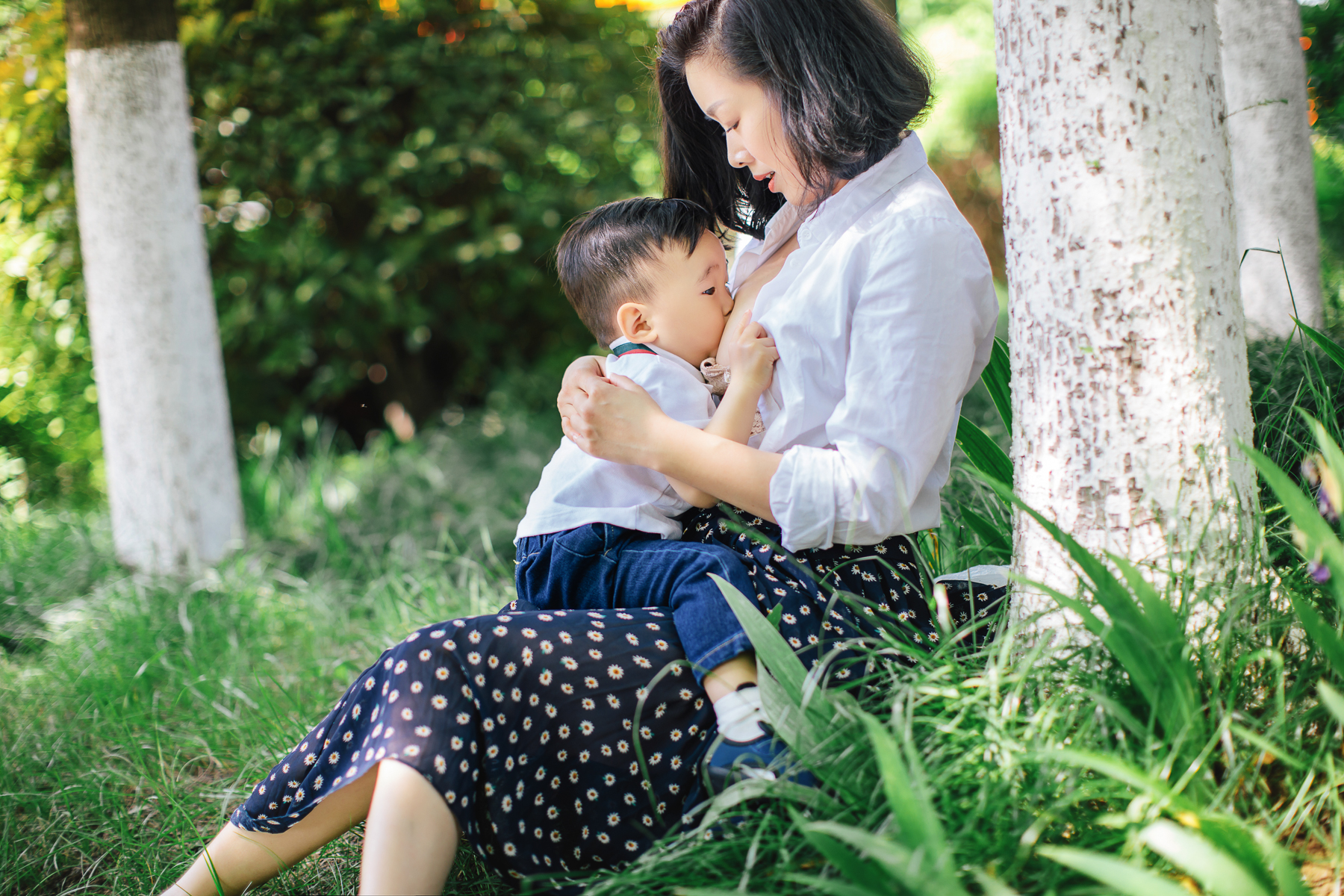Katherine A. Dettwyler, PhD Department of Anthropology Texas A & M University College Station Texas
from Breastfeeding Abstracts, August 1994, Volume 14, Number 1, pp. 3-4.
In the United States, women receive conflicting advice about when to wean their children completely from breastfeeding. The American Academy of Pediatrics recommends one year, while WHO and UNICEF recommend at least two years. Many physicians consider six months to be “extended” breastfeeding, and some health professionals question the motives of women who nurse for more than a year. In turn, women may hide the fact that they are still nursing an older child from disapproving health care professionals or family members. From anthropological research, we know that in many non-Western cultures children are routinely nursed for three to four years. Are they eccentric, or are we? Can we look to other animals to determine what the natural age at weaning would be in modern humans if it was not modified by cultural beliefs?
在美国,妇女得到的关于何时完全断奶的建议是不一致的。美国儿科学会建议至少一年(见附注),而世界卫生组织和联合国儿童基金会建议至少二年。许多医生认为六个月后即进入母乳延长阶段,并且,一些健康专家质疑那些母乳喂养超过一年的母亲的动机。同时,一些母亲可能向持不同意见的保健专家和家人隐瞒自己仍旧为大龄宝宝喂养母乳的事实。通过人类学研究,我们知道在许多非西方文化里,婴幼儿通常会接受三到四年的母乳喂养。是他们太反常还是我们?我们能否在排除文化信仰因素的前提下通过观察其他动物来确定现代人类究竟应该在哪个年龄断奶?
Like all mammals, humans have mammary glands that function to nurture their offspring. Within the class Mammalia, humans are members of the order Primates, and have the basic primate pattern of breastfeeding and weaning activity that has been molded by more than 65 million years of natural selection to ensure the best possible survival rate of primate offspring. This basic pattern is assumed to be primarily genetically based. In addition, a number of life-history variables are also associated with age at weaning in the non-human primates. What do these variables suggest about the “natural” age of weaning in humans?
和所有哺乳动物一样,人类拥有乳腺来喂养后代。在哺乳类动物中,人类属于灵长目,具有灵长目动物经过6500万年自然选择后铸就的哺乳和断奶行为模式,以保证灵长目动物后代能有最强的生存率。这个基本模式被假设为由灵长目遗传基因因素决定。另外,非人类的灵长目动物的断奶年龄同样取决于一些生活史变量因素。这些变量对于人类的“自然”断奶年龄而言意味着什么?
Weaning according to tripling or quadrupling of birth weight. The idea that mammals wean their offspring when they have tripled their birth weight is widely reported in the breastfeeding literature (Lawrence 1989). This rule of thumb holds true for small-bodied mammals, but not for larger ones. Recent research has looked at age at weaning and at growth among large mammals, including primates. The research shows that weaning occurs some months after quadrupling of the birth weight, rather than tripling (Lee, Majluf and Gordon 1991). When do U.S. infants typically quadruple their birth weight? For males, the average age is around 27 months, and for females, around 30 months.
断奶的时间根据宝宝出生体重的三倍或四倍来判定。母乳喂养的文献(Lawrence 1989)普遍报道说,哺乳动物在孩子体重增长到出生体重的三倍时断奶。这说法大抵适用于小型体积的哺乳动物,而不是大型哺乳动物。近期的研究开始观察大型哺乳动物的断奶年龄和发育情况,其中包括灵长类动物。研究表明断奶发生在体重发育到出生时四倍后的数月,而非三倍时(Lee, Majluf and Gordon 1991)。美国的婴儿通常什么时候体重增长四倍呢?对于男婴来说,平均年龄在27个月左右,对于女婴来说,通常是30个月左右。
Weaning according to attainment of one-third adult weight. Other studies suggest that primates are like other mammals in weaning each offspring when they reach about one-third their adult weight (Charnov and Berrigan 1993). Humans come in different sizes, but 4 to 7 years of nursing would be the weaning age for humans using this method of comparison, with boys generally being nursed longer than girls, and large-bodied populations nursing longer than small-bodied groups.
断奶的时间也可以根据达到成人体重的三分之一来判定。其他的研究表明灵长类动物,和其他哺乳动物一样,当其达到约成人体重的三分之一时可以断奶(Charnov and Berrigan 1993)。人类的体型各有差异,但是如果根据这个方法,人类会在4到7年之间断奶,而且男孩的母乳喂养时间通常长于女孩,体型大的种族的母乳喂养时间长于体型小的种族。
Weaning according to adult body size. Harvey and Clutton-Brock (1985) published a study of life-history variables in primates, including a formula for calculating age at weaning based on adult female body weight. The equation predicts an age at weaning for humans at between 2.8 and 3.7 years, depending on average adult female body weight, with larger-bodied populations nursing the longest.
断奶的时间也可以根据成人的体型来判定。Harvey和Clutton-Brock (1985)发表了一个关于灵长类动物生活史变量的研究,介绍了一个基于成年女性体重来计算断奶年龄的公式。这个等式预测人类的断奶年龄在2.8到3.7年之间,并取决于成年女性的平均体重。体型较大的种族母乳喂养时间最长。
Weaning according to gestation length. It is often reported in the literature that, among mammals in general, weaning age is approximately the same as the length of gestation (Lawrence 1989). By this criterion, weaning in humans might be expected to take place after only nine months of breastfeeding. However, this one-to-one relationship is greatly affected by the adult size of the animal. For many small-bodied primates, the duration of breastfeeding is shorter than the length of gestation. Among large-bodied primate species, the duration of breastfeeding far exceeds the average length of gestation. For humankind‘‘s closest relatives, the chimpanzee and the gorilla, the duration of breastfeeding is more than six times the length of gestation. Humans are among the largest of the primates, and share more than 98 percent of their genetic material with chimpanzees and gorillas. Based on these comparisons, an estimated natural age at weaning for humans would be a minimum of six times gestational length, or 4.5 years.
断奶的时间也可以根据怀孕周期来判定。研究文献经常报道,对于哺乳动物而言,通常断奶年龄和怀孕周期大致相同(Lawrence 1989)。根据这个标准,人类断奶的发生或许应该在哺乳仅九个月之后。然而,这种一一对应的关系极度受到动物成年后体型的影响。对于很多体型较小的灵长类动物而言,母乳喂养的时期比怀孕周期要短。而对于体型较大的灵长类动物,母乳喂养的时期比怀孕周期要长得多。对于人类的近亲黑猩猩和大猩猩而言,母乳喂养的时期是怀孕周期的六倍多。人类属于灵长类动物中体型较大的族群,与黑猩猩和大猩猩的基因有百分之九十八相似。根据这个比较,人类自然断奶的年龄预计至少为怀孕周期的六倍长,即4.5岁。
Weaning according to dental eruption. According to the research of Smith (1991), many primates wean their offspring when they are erupting their first permanent molars. First permanent molar eruption occurs around 5.5 to 6.0 years in modern humans. It is interesting to note that achievement of adult immune competence in humans also occurs at approximately six years of age, suggesting that throughout our recent evolutionary past, the active immunities provided by breast milk were normally available to the child until about this age (Fredrickson).
断奶的时间也可以根据牙齿萌出的时间来判定。根据Smith的研究(1991),许多灵长类动物在萌出第一颗永久的臼齿后断奶。对于现代人类来说,通常第一颗永久的臼齿的萌出在5.5到6岁之间。有趣的是,成人的免疫系统也在大约六岁左右完善,说明在人类近期的进化过程中,母乳提供的主动免疫功能会一直提供到孩子六岁左右(Fredrickson)。
Our evolutionary past has produced an organism that relies on breastfeeding to provide the context for physical, cognitive, and emotional development. The human primate data suggest that human children are designed to receive all of the benefits of breast milk and breastfeeding for an absolute minimum of two and a half years, and an apparent upper limit of around 7 years. Natural selection has favored those infants with a strong, genetically coded blueprint that programs them to expect nursing to continue for a number of years after birth and results in the urge to suckle remaining strong for this entire period. Many societies today are able to meet a child‘‘s nutritional needs with modified adult foods after the age of three or four years. Western, industrialized societies can compensate for some (but not all) of the immunological benefits of breastfeeding with antibiotics, vaccines and improved sanitation. But the physical, cognitive, and emotional needs of the young child persist. Health care professionals, parents, and the general public should be made aware that somewhere between three and seven years may be a reasonable and appropriate age of weaning for humans, however uncommon it may be in the United States to nurse an infant through toddlerhood and beyond.
人类的进化过程产生了依赖于母乳喂养来培养身体、感知和情感发育功能的有机体。人类灵长目数据显示人类幼儿生来需接受母乳和母乳喂养的所有益处的时期最少为两年半,而适当的上限为七年左右。物竞天择的自然规律偏向于那些拥有强劲的基因蓝图的幼儿。这个蓝图使他们在出生后持续数年母乳喂养,并且在整个周期里吮吸母乳的欲望保持强烈。现今人类社会可以通过改善后的成人食物来满足儿童在三到四岁后的营养需求。西方工业化社会可以通过抗生素、疫苗和改进的环境卫生来弥补一些(不是所有)母乳喂养的免疫学益处。但是幼儿在身体、感知和情感发育方面的需求仍在。卫生保健专家、家长以及一般公众应该被告知三岁到七岁之间是人类断奶的合理并合适的时间。然而在美国,母乳喂养到幼儿学步甚至更长通常是罕见的。
(王书睿 翻译 Shiuh-jane、Daisy审稿)
References
- Charnov, E. L. and D. Berrigan. Why do female primates have such long lifespans and so few babies? or Life in the slow lane. Evol Anthropol 1993; 1:191-94.
- Fredrickson, D. University of Kansas, personal communication.
- Harvey, P. H. and T. H. Clutton-Brock. Life history variation in primates. Evolution 1985; 39:559-81.
- Lawrence, R. A. Breastfeeding: A Guide for the Medical Profession, 3rd edition. St. Louis: Mosby, 1989.
- Lee, P C., P. Majluf, and I. J. Gordon. Growth, weaning and maternal investment from a comparative perspective. J Zool Lond 1991; 225:99-114
- Smith, B. H. Age of weaning approximates age of emergence of the first permanent molar in nonhuman primates, abstracted. Phys Anthropol Suppl 1991; 12:163-64.
附:2012美国儿科学会最新发布的指南内容中关于离乳时间的部分。The AAP reaffirms its recommendation of exclusive breastfeeding for about 6 months, followed by continued breastfeeding as complementary foods are introduced, with continuation of breastfeeding for 1 year or longer as mutually desired by mother and infant. 美国儿科学会重申推荐纯母乳喂养时间为六个月,之后添加固体食物并继续母乳喂养至一岁,之后由母婴的意愿决定是否继续。

